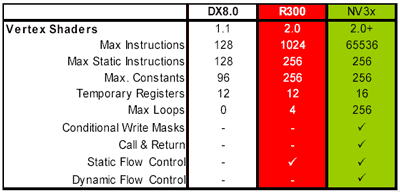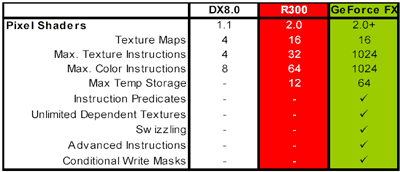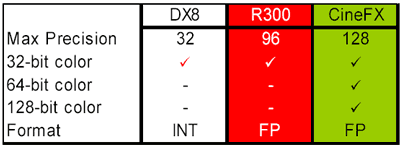There aren't really any concrete sources on this, and some even contradict each other. Looking through Microsoft's online shader documentations, they apparetnly only list versions 2.0 and 2.x.
AFA I can tell, 2.0a is used to refer to the extended shader abilities of Geforce FX, and 2.0b for Radeon X*00 series.
Are these actual shader models? If so, were they introduced with DX 9.0a and 9.0b, or existed from the initial DX9 release?
Also, did MS come up with them first, or released these DX versions retroactively, based on the features nvidia and ATI implemented on their GPUs?
AFA I can tell, 2.0a is used to refer to the extended shader abilities of Geforce FX, and 2.0b for Radeon X*00 series.
Are these actual shader models? If so, were they introduced with DX 9.0a and 9.0b, or existed from the initial DX9 release?
Also, did MS come up with them first, or released these DX versions retroactively, based on the features nvidia and ATI implemented on their GPUs?






